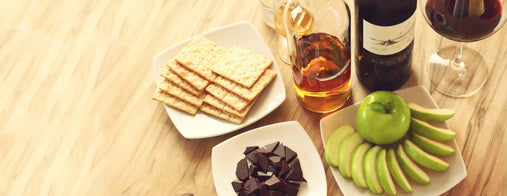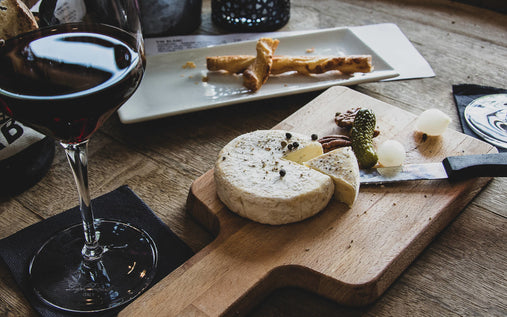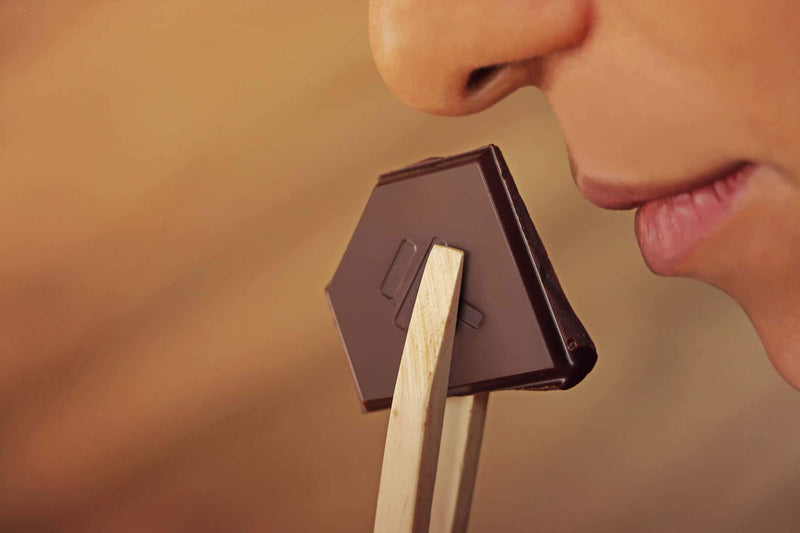
20th of July 2018
Quick & Easy Guide to Tasting Chocolate
Dark chocolate tasting and wine tasting both follow the same principles. In both cases, we use our sensory awareness to deepen an experience. With dark chocolate, as with wine, we have the opportunity to transform an activity that could be mundane (i.e., the act of consumption) into something sublime. This is what it means to live richly.
Below you will find a Quick & Easy Guide to tasting chocolate. If you’d like to take a deeper dive into the subject, feel free to download our Comprehensive Guide on how to taste chocolate.
Storage and Preparation
Store dark chocolate at room temperature and keep it away from direct sunlight and other strong odors
-
Try to avoid eating garlic or other heavily-spiced foods before tasting chocolate.
-
Get other people involved. Tasting chocolate is always more fun in a group setting.
-
If you’re tasting multiple different bars of dark chocolate, it’s nice to have a glass of water on hand to cleanse the palate in between bars. Bread or salted crackers also help.
Setting
-
Choose a place that is free from other strong odors.
-
Both the room and the chocolate should be at room temperature.
-
When it’s time to begin, bring your attention to the chocolate and to your own sensory awareness. All five senses will be called into action.

Visual
Inspect the color and sheen of the chocolate bar. White splotches (called bloom) indicate that the chocolate has suffered temperature damage. When this happens, the chocolate is still edible, but the nuances will be compromised.
Auditory
Break off a piece of the chocolate and listen to the “snap” that it makes. A fairly loud snap usually indicates that the bar was properly tempered. It’s also an indicator that the bar is not too warm for tasting; a warm chocolate bar won’t snap.
On the Nose
-
Bring a piece of the chocolate near to your nose and explore the aroma—as you would with a glass of wine.
-
Start out by assessing the intensity of the aroma. Then, look for primary characteristics such as fruity, floral, earthy, nutty, spicy, or classic “chocolatey” aromas.
-
If you already have a well-trained nose, you may also perceive secondary aromas. Don’t worry if you can’t pick out specific characteristics—dark chocolate is often subtle on the nose. You will soon get a second chance to perceive aromas, via the retronasal passage, once the chocolate is in your mouth.
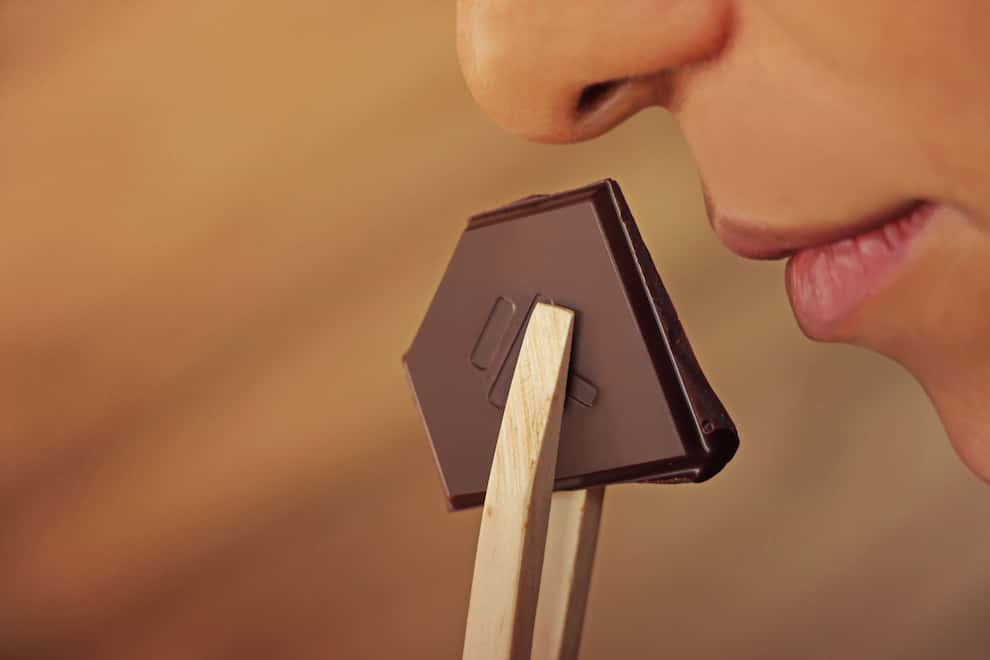
Let It Melt
Now move the piece of chocolate into your mouth. Don’t chew! Rather, use your teeth to break the chocolate into a few smaller pieces, and then let it melt. As it melts, move it around inside your mouth (as you would with a mouthful of wine) to maximize exposure to your taste buds.
Texture
Take note of the texture. Maybe it’s smooth and silky, or maybe it’s a bit granular. Observe how it melts (quickly or slowly) and its consistency (thin, thick, pasty, or buttery).
On the Palate
Try to identify the primary flavor characteristics (fruity, floral, vegetal, nutty, spicy, chocolatey). From there, you can also try picking out more specific notes, such as raisin, fig, orange blossom, hazelnut, forest floor, honey, anise, tobacco, caramel… the list is nearly endless. Or don't worry about putting words to it—simply let the sensory impressions wash over you.
Complexity
Pay attention to how the flavor evolves over time. A complex chocolate will unfold like a miniature movie inside your mouth, with a cast of different characters and a developing plot line.
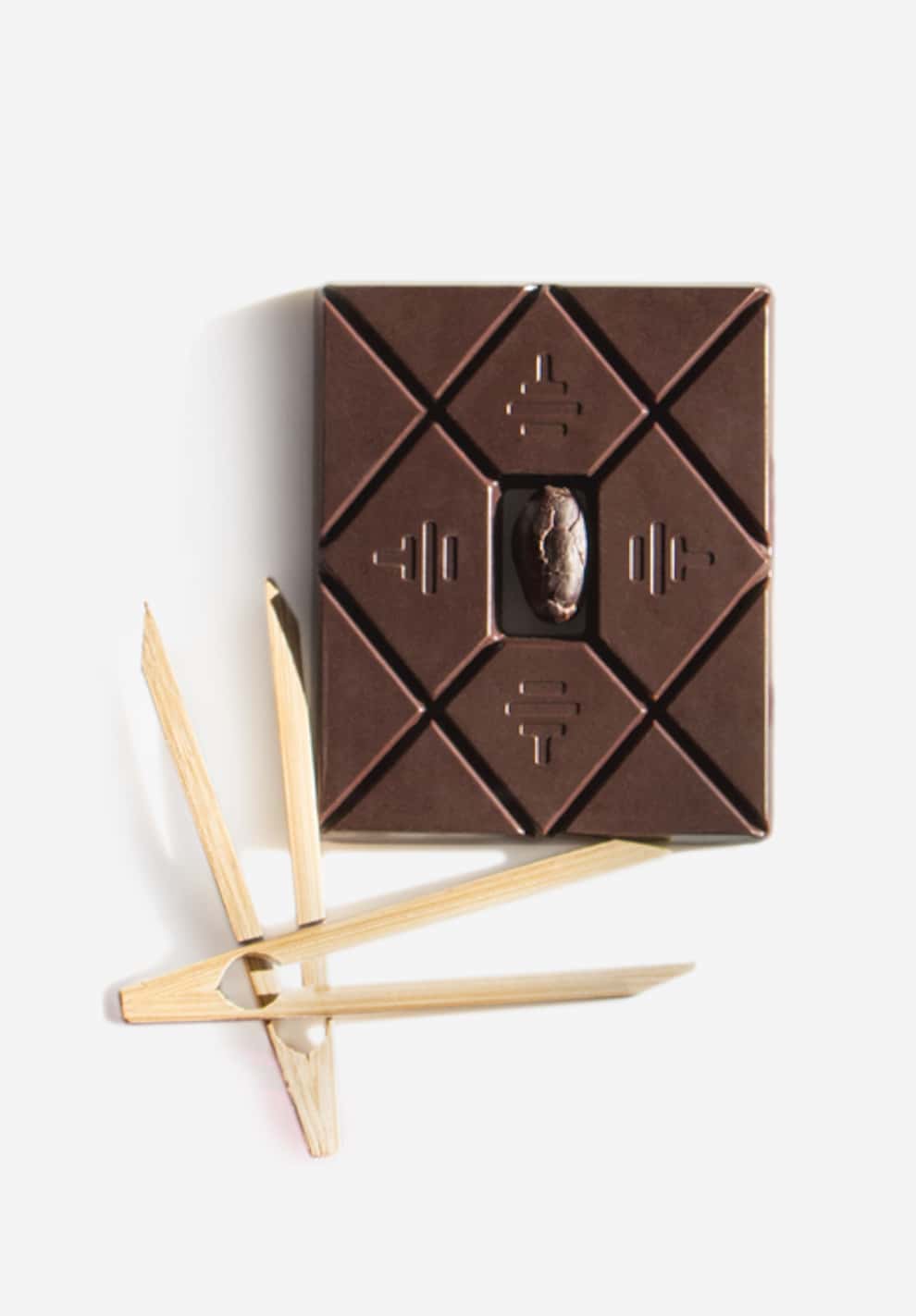
Finish
Last but not least, observe the finish. Does the flavor sensation disappear shortly after the chocolate melts, or does it linger? What are the final sensations? How do you feel in the afterglow?
Pairing
Now that you have properly tasted dark chocolate on its own, you have the option to take it one step further. If you enjoy wine and spirits or cheese, the next level is to explore pairings with dark chocolate. Click here to learn about how to pair chocolate with wine, spirits, and cheese.

